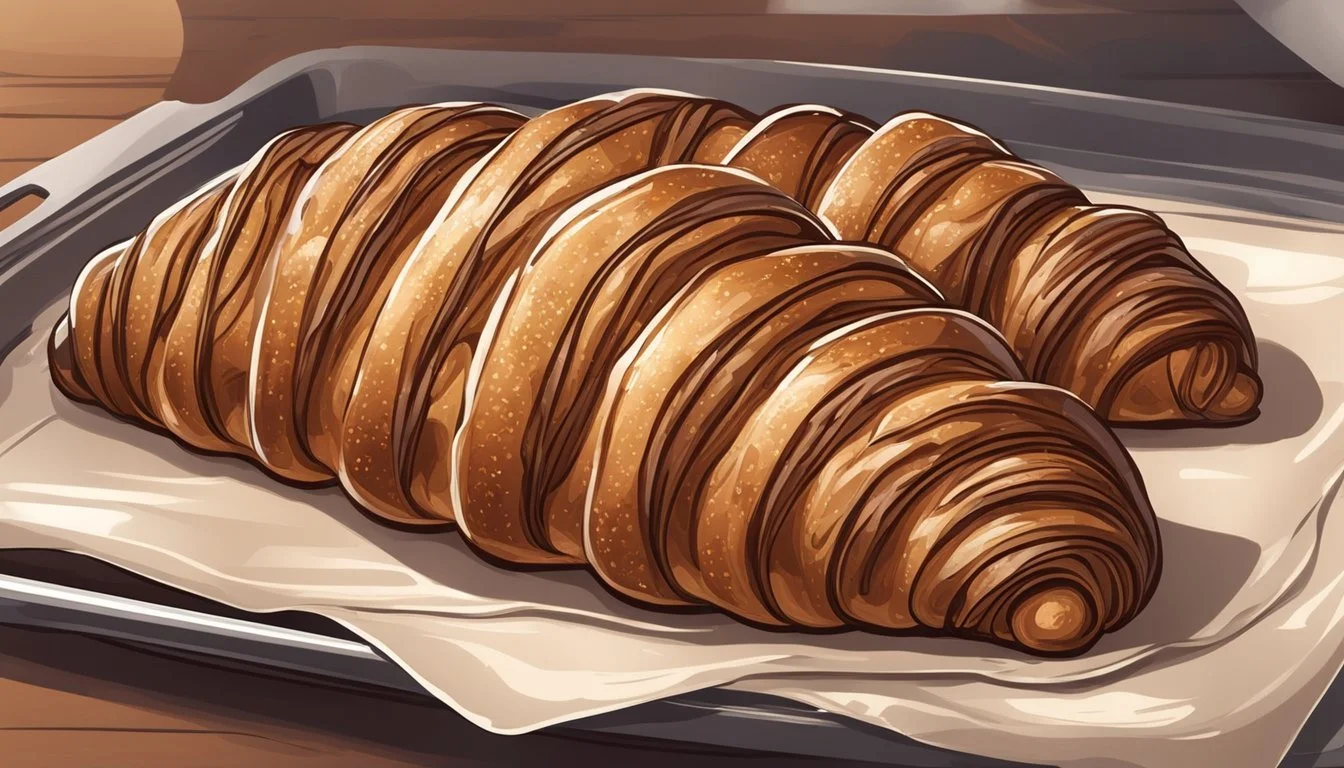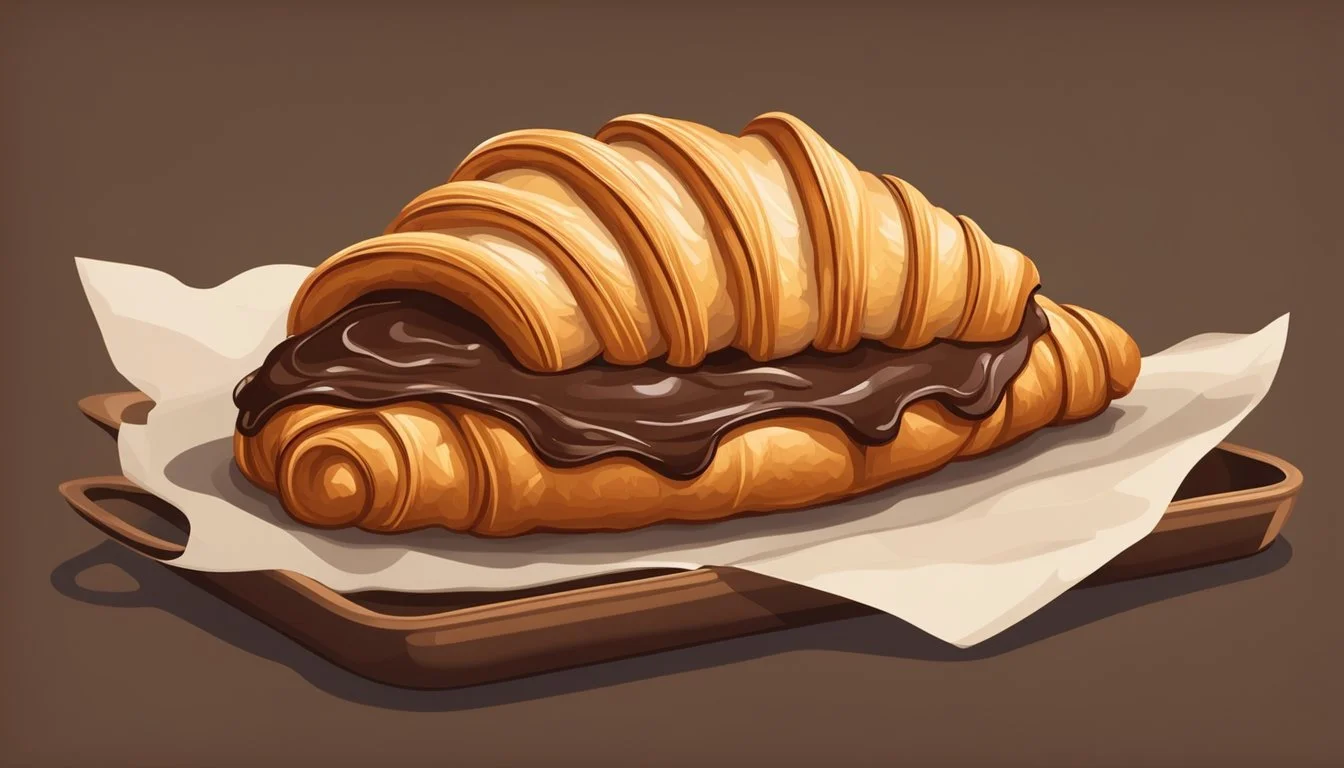Best Way to Reheat Chocolate Croissant
Tips for a Flaky, Melty Treat
Reheating a chocolate croissant properly is essential to revive its fresh-out-of-the-bakery taste. The key is to maintain the delicate balance between the flaky layers and the melting chocolate (What wine goes well with chocolate?). Chocolate croissants, with their deceptively simple appearance, encase a complex structure that requires careful heating to ensure that every bite is as satisfying as the first. The best methods for reheating take into account the croissant's unique texture and the chocolate's melting point to ensure that the pastry is warm throughout without becoming soggy or overly crisp.
There are several techniques to reheat chocolate croissants, but some methods stand out for preserving the quality of the pastry. An oven or an air fryer can distribute heat evenly, which is a critical factor in achieving the desired flakiness without melting the chocolate excessively. Microwaves may offer convenience but should be used with caution to avoid uneven heating. The objective remains the same across all devices: to bring the croissant to a temperature that awakens its flavors and textures while keeping the chocolate's melt-in-your-mouth quality intact.
Understanding Croissants
To ensure a croissant retains its delectable qualities during reheating, one must recognize its delicate composition, proper storage methods, and optimal reheating techniques.
Composition and Texture
A croissant is a buttery, flaky pastry known for its crispy exterior and fluffy interior. Achieving this flaky texture demands a meticulous process where butter is folded into dough multiple times to create thin layers. When baked, the butter's moisture evaporates, lifting the dough layers apart, creating the pastry's characteristic airiness and flakiness.
Storing Croissants
To maintain freshness, store croissants at room temperature in a plastic bag to prevent them from drying out. Freezer storage can prolong their shelf life—wrap them in aluminum foil or place them in a plastic bag. Frozen croissants should be thawed in the refrigerator or at room temperature before reheating. Avoid leaving croissants in the fridge for prolonged periods as this can cause them to become stale due to moisture loss.
Preparing for Reheating
Croissants should be brought to room temperature if they have been stored cold or frozen. For a freshly baked feel, wrapping the pastry in parchment paper can help retain moisture. Using a microwave-safe plate for microwaving or a baking sheet for the oven will ensure they heat evenly.
Reheating Methods Overview
Oven: Preheat to 300°F and heat for approximately 7-10 minutes on a baking sheet for an oven, or 3-5 minutes for a toaster oven.
Microwave: Set to medium-low power, around 50%, reheating in 15-second intervals with a microwave-safe plate.
Toaster: Generally not recommended unless you desire a very crispy shell.
Air Fryer: Preheat to 350°F and heat for a quick and even warm-up.
Stove: Can be used with caution to re-crisp the outer layers of a croissant.
Toaster Oven: A viable alternative to a conventional oven, follow oven instructions but monitor closely as it heats quicker.
Detailed Reheating Techniques
Reheating a chocolate croissant properly is crucial to enjoy its flakiness and melt-in-your-mouth chocolate. This section provides step-by-step guides for different reheating methods, ensuring even heating and retained moisture.
Oven Reheating Method
Preheat the oven to 300°F (150°C). Place the croissant on a baking sheet lined with parchment paper. Heat for 7-10 minutes if the croissant is room temperature, or about 10-15 minutes if from the refrigerator. This method allows for even reheating and a crispy exterior.
Microwave Reheating Tips
Set the microwave to medium-low power (50%). Reheat the croissant in 15-second intervals, checking for even warmth. Cover the croissant with a moist paper towel to avoid drying out. This technique is quick but may slightly affect the texture.
Toaster and Toaster Oven Adaptations
For toasters or toaster ovens, preheat to 350°F. Place your croissant inside for 3-5 minutes. Monitor closely to prevent burning. This method usually provides a crispy crust but can also quickly overcook the croissant.
Stovetop Reheating Process
In a frying pan over medium heat, place the croissant and cover with a lid. Heat for a couple of minutes on each side until it's warmed through. This retains moisture while giving the croissant a slight crispiness.
Alternative Reheating Appliances
An air fryer can be used to reheat croissants efficiently. Preheat to 350°F and heat the croissant for about 3 minutes. Remember to provide space around it for air circulation. This can result in a crispy exterior without drying the inside.
Reheating Frozen Croissants
For a frozen croissant, preheat the oven to 375°F (190°C). Place the unwrapped croissant on a baking sheet and heat for about 7 minutes. The oven provides the best results for reheating without sacrificing the croissant’s moisture.
Reheating Croissants Filled with Chocolate
When reheating a chocolate-filled croissant, use low heat to prevent the chocolate from burning. The oven at 300°F or the microwave at 50% power can gently warm the filling without melting it excessively.
Avoiding Common Reheating Mistakes
Do not overheat, as this can lead to a tough texture.
Always use parchment paper or aluminum foil to retain moisture.
Avoid high microwave settings which can quickly dry out and unevenly heat the croissant.
Each method caters to different needs and constraints, but all aim to freshen up the croissant’s deliciousness.
Additional Tips and Tricks
In reheating chocolate croissants, it's not only the method that matters but also the technique to ensure the final product tastes as delightful as when freshly baked. This section focuses on maintaining that quality, repurposing any past-peak croissants, and pairing your reheated treats to enhance the experience.
Maintaining Crispness and Freshness
To keep reheated chocolate croissants flaky and savory, one must pay attention to the reheating environment. A common mistake while reheating is inadvertently softening the crust, which can be avoided by:
Oven reheating: Preheat to 300°F. Place the croissant on the middle rack for about 7-10 minutes. For enhanced crispiness, remove any coverings in the last 2-3 minutes.
Microwave with care: Heat at 50% power in intervals of 15 seconds to retain moisture without sogginess.
Repurposing Stale Croissants
Stale croissants need not be wasted; they can be given a new lease on life through repurposing:
Croissant French Toast: Soak in a mixture of eggs, milk, and cinnamon, then pan-fry until golden brown.
Bread Pudding: Cube the croissants and bake with custard to revitalize their texture.
Croissant Sandwich: Use the croissant as a base for a ham and cheese sandwich, revitalizing it by toasting lightly to meld the flavors.
Serving Suggestions and Pairings
Serving reheated chocolate croissants with complementary accompaniments can elevate the entire experience:
To freshen up leftovers, dusting with powdered sugar can add a touch of sweetness and presentation flair.
Whether store-bought or from a local bakery, a warmed chocolate croissant pairs wells with coffee or a cold glass of milk.
For a savory twist, slice the croissant and stuff it with ham and cheese prior to heating, creating a luxurious croissant sandwich.
By meticulously following these tips, one can enjoy their chocolate croissant to the fullest, regardless of whether it's fresh out of the oven or a day-old treat awaiting rejuvenation.
Conclusion
In the pursuit of maintaining the deliciousness of a chocolate croissant, following a step-by-step guide is essential. The key to successfully reheating croissants lies in choosing the best method that ensures a warm, flaky texture without compromising the chocolatey interior.
Oven Reheating Strategy
Preheat the oven to 300°F (150°C).
Place the croissant on a baking sheet.
Reheat for 7-10 minutes or until sufficiently warm.
If a softer finish is preferred, they can cover the croissant loosely with foil.
Microwave Technique
Set the power to 50%.
Heat in 15-second intervals.
It's important to be mindful that microwave times may vary.
For those that value expediency and convenience, the air fryer offers a quick solution:
Preheat to 350 degrees Fahrenheit.
Heat the croissant until it's evenly warmed, ensuring enough space exists around it for air circulation.
By adhering to these tips, individuals can revive their chocolate croissants to near-original splendor. Patience and attention to detail are crucial in avoiding overheating, which can diminish the distinct textural components that define a perfectly reheated pastry. It's these methods that can help preserve the delectable flakiness and rich chocolate core.
FAQs
In this section, you’ll find quick answers to common questions about maintaining the quality and freshness of your croissants, whether you're storing them for later enjoyment or looking to savor them warm.
How Long Do Croissants Last?
Croissants are best when enjoyed fresh, typically within 1-2 days after baking if kept at room temperature. When stored in a plastic bag to retain moisture, croissants can last up to 2 days without significant loss of quality.
Can You Freeze Croissants?
Yes, croissants can be frozen. For optimal freshness, wrap each croissant individually in plastic, then place them in a freezer bag before storing in the freezer. Frozen croissants can last for about 1 month and still retain much of their original flavor and texture.
What's the Best Way to Store Croissants?
The best way to store croissants is at room temperature in a plastic bag, which helps to maintain their softness. Alternatively, to retain freshness for a longer period, freeze croissants immediately after they have cooled from baking.
Is It Better to Reheat Croissants in the Oven or Microwave?
Oven: Reheating croissants in a preheated oven at 300°F (150°C) for 7-10 minutes is ideal for preserving their flaky texture.
Microwave: For a quick warm-up, set the microwave to medium-low power and reheat croissants in 15-second intervals. However, this method may not retain the pastry's crisp exterior as effectively as the oven.





